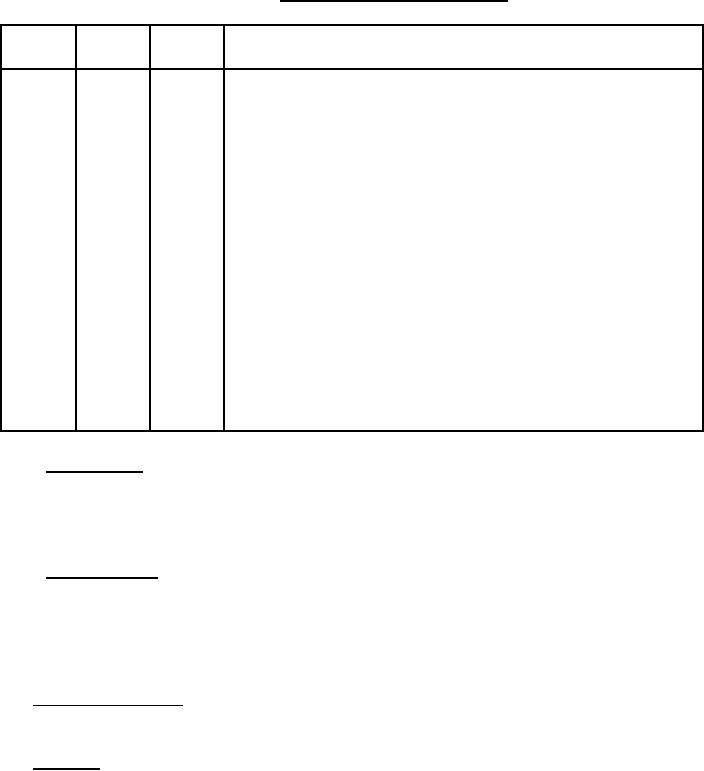
MIL-DTL-82020C(YD)
TABLE II. Options for rigid frogs (see 6.2).
Option Choose
Choose
Description
Number
one
one
1
A
With stub rails.
a
Attached to base plate using integrally cast bolt holes (see
figure 2).
b
Attached to base plate using rail clips (see figure 3).
B
Without stub rails.
a
Field rails connected to fitting using integrally cast bolted rail
attachment bracket (see figure 4).
b
Field rails connected to fitting with rail clips (see figure 5).
2
Specify angle of track intersection.
3
If application requires a radius frog, specify the radius and
geometry.
4
A
No double flangeway extension for half-crossing.
B
With double flangeway extension for half-crossing.
a
Double flangeway extension attached to base plate using
integrally cast bolt holes (see figure 6).
b
Double flangeway extension attached to base plate using rail
clips (see figure 7).
3.1.3 Half-crossing. The half-crossing shall be class E, F, G, or H as specified (see 1.2 and
6.1.2). Examples of these configurations are shown in figure 1. Track connection points shall be
provided with bolt holes for bolted connection to tracks or with the ends beveled for arc welding
connection, as specified (see 6.2).
3.1.4 Turntable frogs. The turntable frog shall consist of a cast manganese steel turntable base
supporting a cast manganese steel turntable and rail. The angle of track intersection is the
rotation angle for the turntable frog and shall be as specified (see 6.2). Field rail connection
points shall be provided with bolt holes for bolted connection to field rails. The turntable frogs
shall be constructed to provide adequate drainage to prevent ponding of rainwater.
3.2 First production frog. When specified (see 6.2), the contractor shall furnish one track fitting
for first article inspection and approval (see 4.2.1 and 6.3).
3.3 Materials. Materials used shall be free from defects which would adversely affect the
performance or maintainability of individual components or of the overall assembly. Materials not
specified herein shall be of the same quality used for the intended purpose in commercial practice.
Unless otherwise specified herein, all equipment, material, and articles incorporated in the work
covered by this specification are to be new and fabricated using materials produced from
recovered materials to the maximum extent possible without jeopardizing the intended use. The
term "recovered materials" means materials which have been collected or recovered from solid
waste and reprocessed to become a source of raw materials, as opposed to virgin raw materials.
5
For Parts Inquires call Parts Hangar, Inc (727) 493-0744
© Copyright 2015 Integrated Publishing, Inc.
A Service Disabled Veteran Owned Small Business